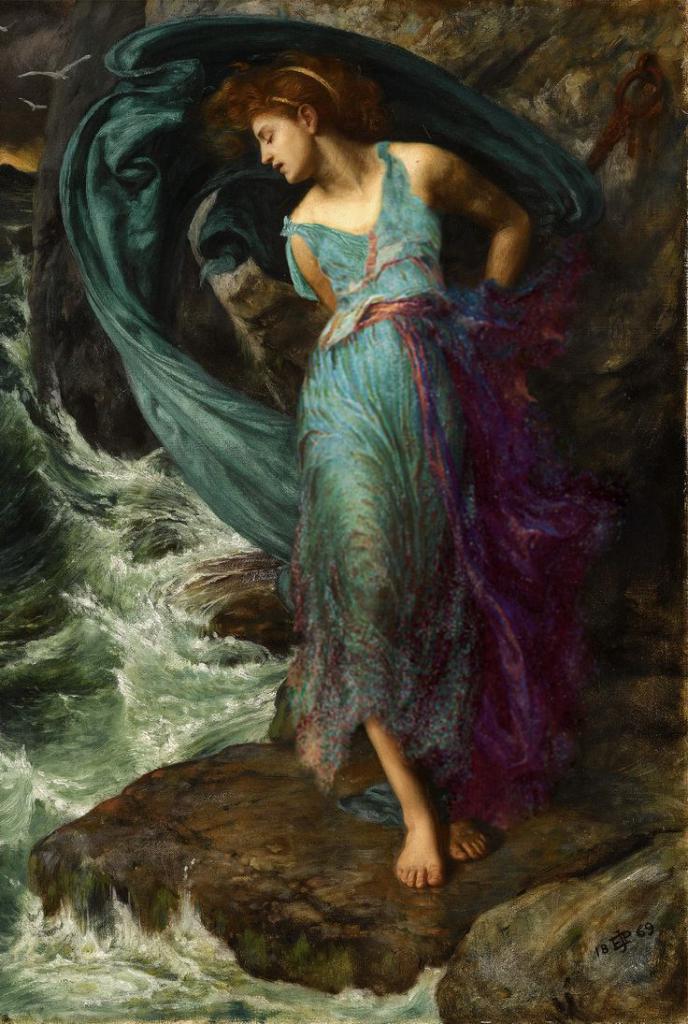One of the most famous and at the same time the most controversial poems written by Osip Mandelstam is Silentium. This article contains an analysis of the work: what influenced the poet, how he was inspired and how these famous poems were created.
Mandelstam's Poems "Silentium"
Recall the text of the work:
Silentium
She's not born yet
She is both music and the word
And therefore all living things
Unbreakable bond.
The seas of the chest breathe calmly
But like a crazy day was bright
And foam a pale lilac
In a black-azure vessel.
May my mouth find
Initial dumbness
Like a crystalline note
What is pure from birth!
Stay foam, Aphrodite,
And return the word to music
And heart of heart be ashamed
With the fundamental principle of life is merged!
Below we present an analysis of this work of the great poet.
The story of the creation of the poem and its analysis
Mandelstam wrote "Silentium" in 1910 - poems were included in his debut collection "Stone" and became one of the most striking works of the then-beginning nineteen-year-old writer. During the writing of Silentium, Osip studied at the Sorbonne, where he attended lectures by the philosopher Henri Bergson and the philologist Joseph Bedier. Perhaps it was under the influence of Bergson that Mandelstam came up with the idea to write this poem, philosophical depth different from earlier works of the author. At the same time, the poet became interested in the work of Verlaine and Baudelaire, and also began to study the Old French epic.
The work "Silentium", filled with an enthusiastic and exalted mood, belongs to the free-form lyrical genre and philosophical theme. The lyrical hero of the work tells of "the one who has not yet been born," but is already music and a word, indestructibly combining all living things. Most likely, the “she” of Mandelstam is a harmony of beauty that combines both poetry and music and is the apogee of all that is perfect in the world. The mention of the sea is connected with the goddess of beauty and love Aphrodite, who was born from sea foam, combining the beauty of nature and the height of the feelings of the soul - she is harmony. The poet asks Aphrodite to remain foam, implying that the goddess is too loud perfection.

Perhaps in the second quatrain, the author hints at the biblical plot of the creation of the world: land appeared from the sea, and under the light, barely separated from the darkness, beautiful shades were visible among the general blackness of the ocean. A day that is "bright as crazy" may mean some moment of insight and inspiration experienced by the author.
The last quatrain again refers to the biblical theme: hearts hardened by each other most likely hint at the shame experienced by Adam and Eve after they had tasted the fruit from the Tree of Knowledge. Here Mandelstam calls for a return to the original harmony - the "fundamental principle of life."
Title and Expression
It is impossible to analyze Mandelstam's Silentium without understanding what the name means. The Latin word silentium means silence. This title is a clear reference to the verses of another famous poet - Fedor Tyutchev. However, his work is called Silentium! - an exclamation mark gives the form of an imperative mood, in connection with which the name most correctly translates as "Be quiet!". In these verses, Tyutchev urges you to enjoy the beauty of the external world of nature and the internal world of the soul without further ado.
In his poem Silentium, Mandelstam echoes Tyutchev’s words, but avoids direct appeal. From this we can conclude that “silence” or “silence” is the harmony of beauty that is “not yet born”, but is about to appear in the minds and hearts of people, allowing them to silently enjoy in the “original dumbness” life with the splendor of natural feelings and emotions.
The main expressive means of this poem are syncretism and cyclic repetitions ("and music and word - and the word return to music", "and foam the pale lilac - stay foam, Aphrodite"). Picturesque images typical of Mandelstam’s entire poetry are also used, for example, “pale lilac in a black-and-blue vessel”.
Mandelstam uses a four-foot iambic and his favorite way of cyclic rhyming.
sources of inspiration
Having written Silentium, Mandelstam first reveals himself as a serious, original poet. Here he uses images for the first time, which then will again and again appear in his work. One of these images is the mention of ancient Roman and Greek themes - the poet has repeatedly admitted that he sees in the plots of myths the harmony so desired for him, which he constantly looks for in the things around him. The "Birth of Venus" Botticelli also prompted Mandelstam to use the image of Aphrodite.
The sea became the main phenomenon that inspired the poet. "Silentium" Mandelstam surrounded the sea foam, likening the silence of Aphrodite. Structurally, the poem begins with the sea and the sea ends, and thanks to the sound organization, a harmonious splash is heard in each line. The poet believed that it is on the seashore that one can feel how silent and small a person is against the background of the spontaneity of nature.